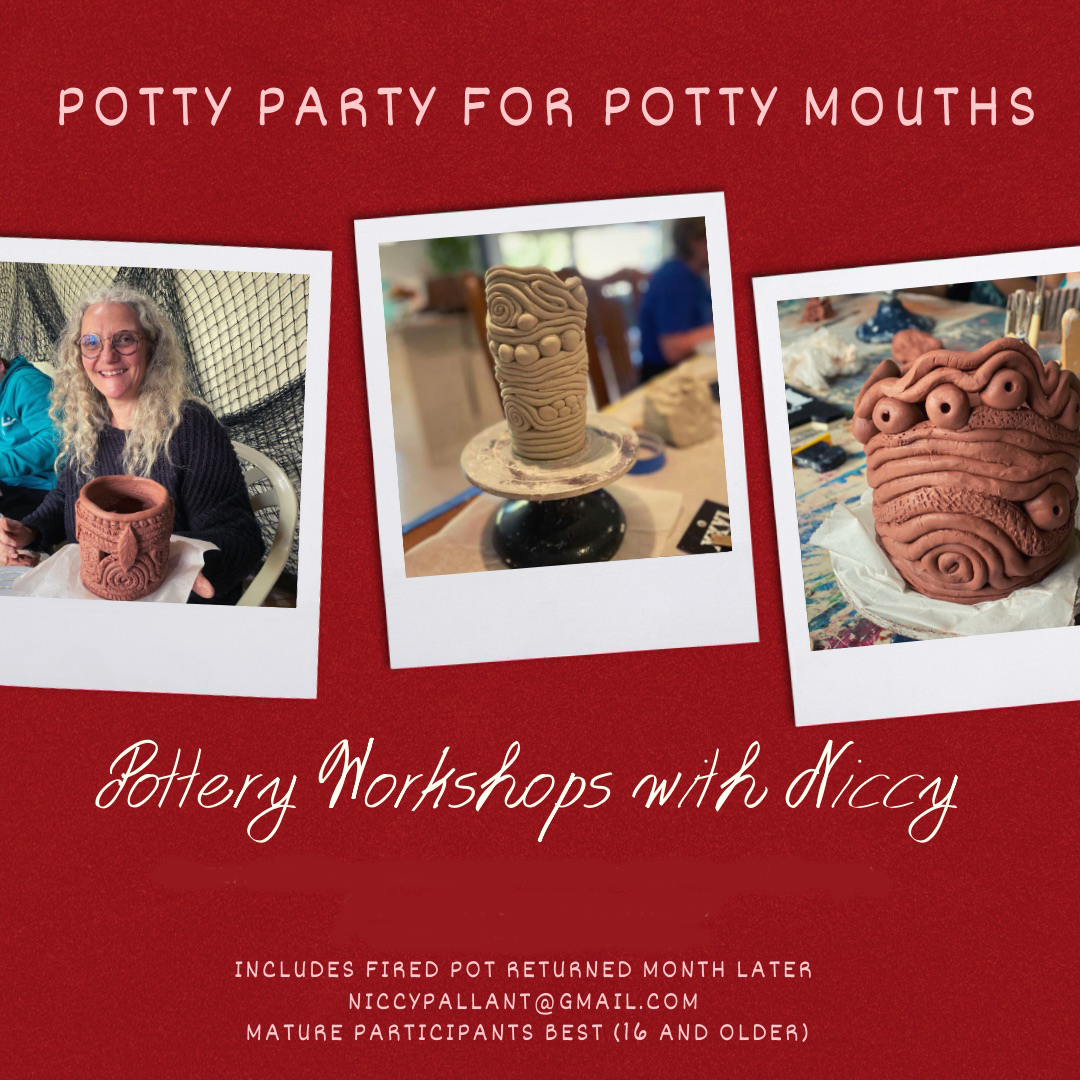
Potty party for Potty mouths (Potty Party)
Aligned with ACARA & Nat Standards for Teachers, Certificate of Participation.
2 hrs.
Fired pot returned within month.
Kids Potty Party (Aged 8 to 12)
Adult Workshop, Hen’s Night (Adults & Teens)
Printmaking
Printing with Light – Cyanotype
Cyanotype is the original sun-printing process and one of the earliest photographic techniques ever developed. Discovered in 1842 and distinctive for producing rich, Prussian blue monochromatic prints, Cyanotype was used well into the 20th century as an inexpensive method for reproducing photographs, documents, maps and plans (hence the enduring architectural term “blueprint”), as well as for making impressions of biological specimens in the field (“photograms”).
Cyanotype may be used to create detailed prints from virtually any object that casts a shadow: tools, toys, plants, leaves, stones, sand, string, lace, etc. Simply place the object on the sensitised surface and expose to sunlight (UV). By using a digitally-printed photographic negative (an inverted black and white photo inkjet-printed onto a transparency*) instead of an object, cyanotype may also be used to create full-resolution photographs on paper or fabric. Great for photographers, mixed media artists, printmakers, quilters, kids and more, the cyanotype process is easy, forgiving, quick, magical and fun. Harness the power of the sun—a great group activity for the whole family!
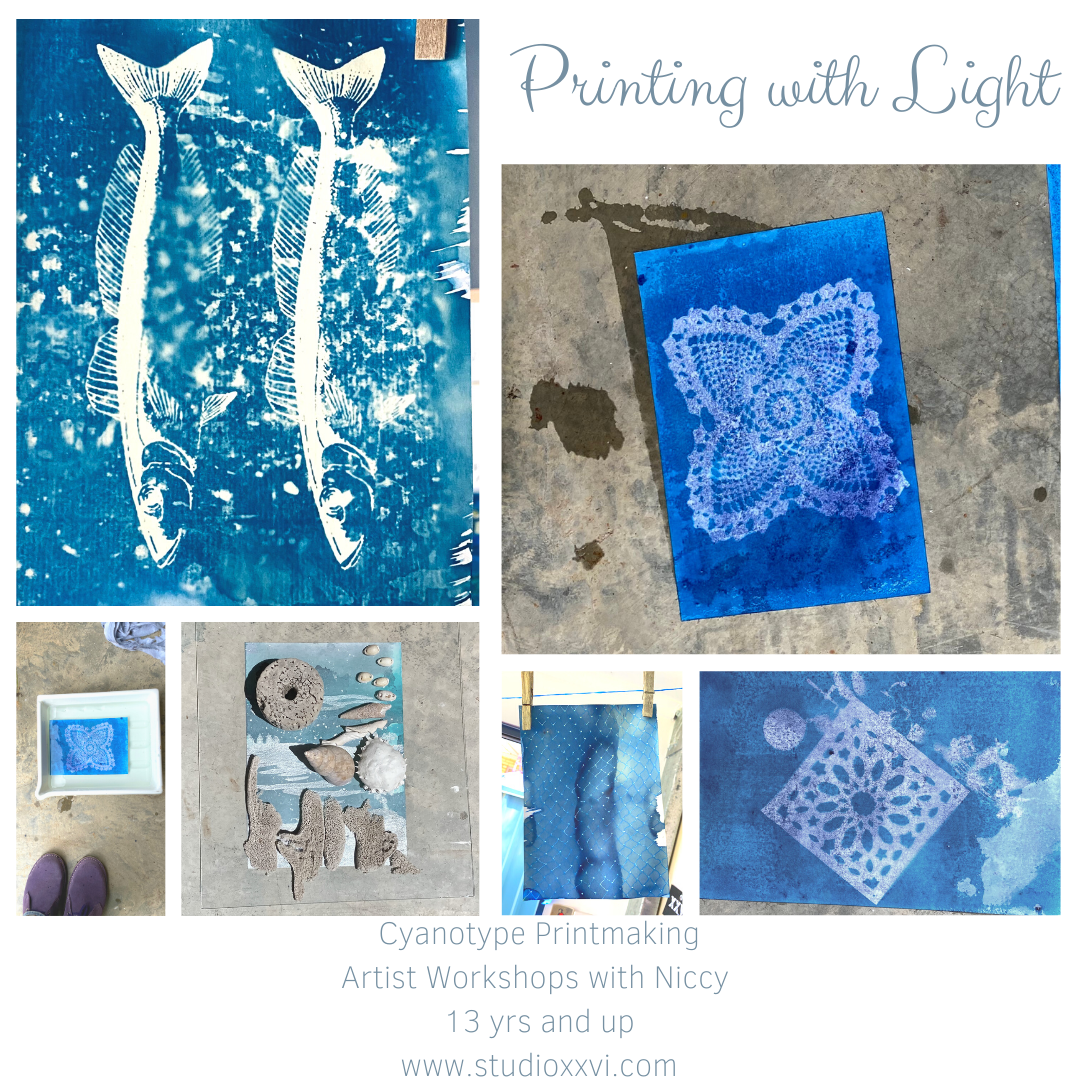
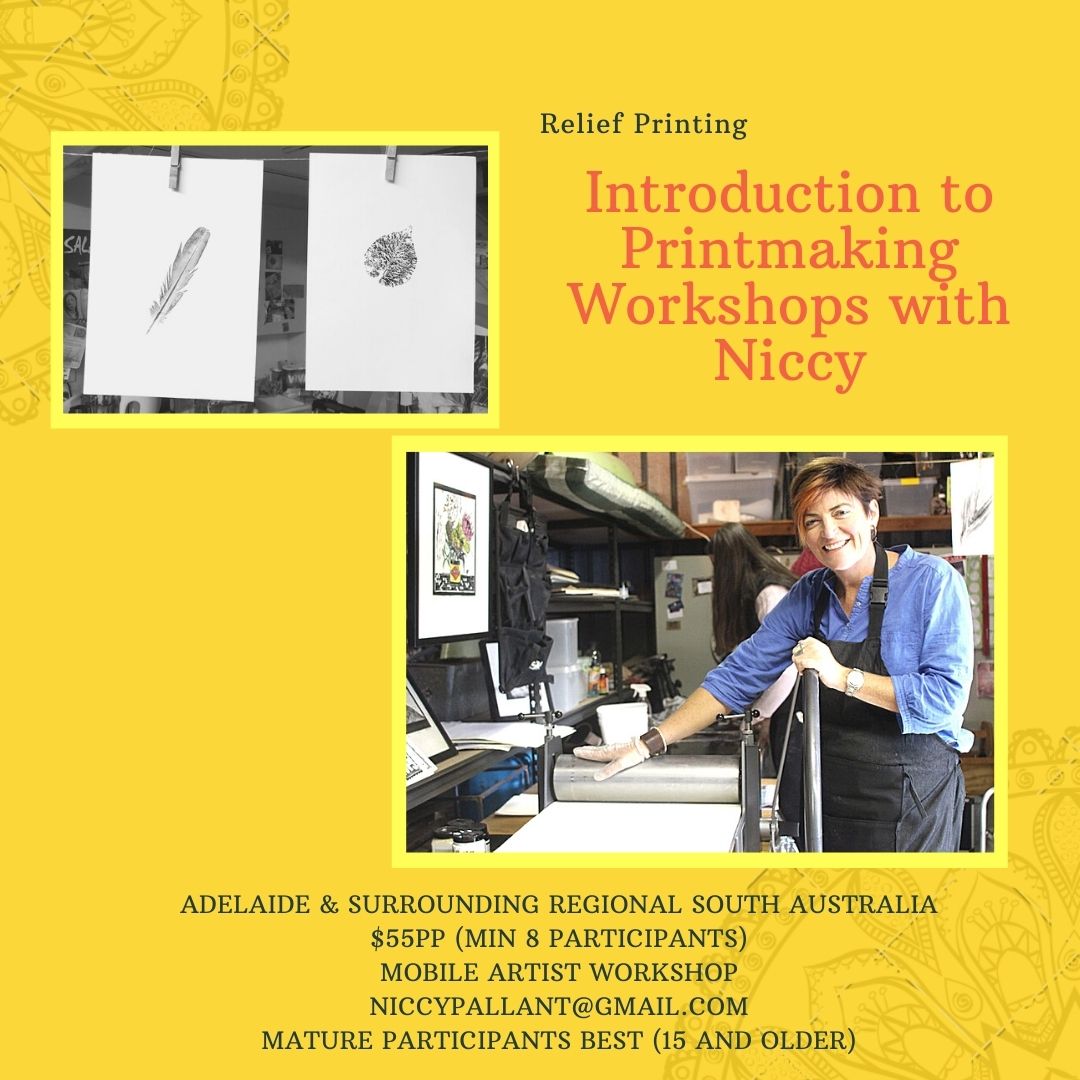
Printmaking
Introduction to printmaking (with a press)
As an isolated Art teacher in the backroads of South Australia I was lucky enough to spend a year studying with an amazing Printmaker Di Longley.
I want to open this fascinating and fulfilling world up for you too.
Printmaking is such a forgiving discipline. Mark making on its most fascinating level. Nothing doesn’t work. Experimenting pays off – every time!
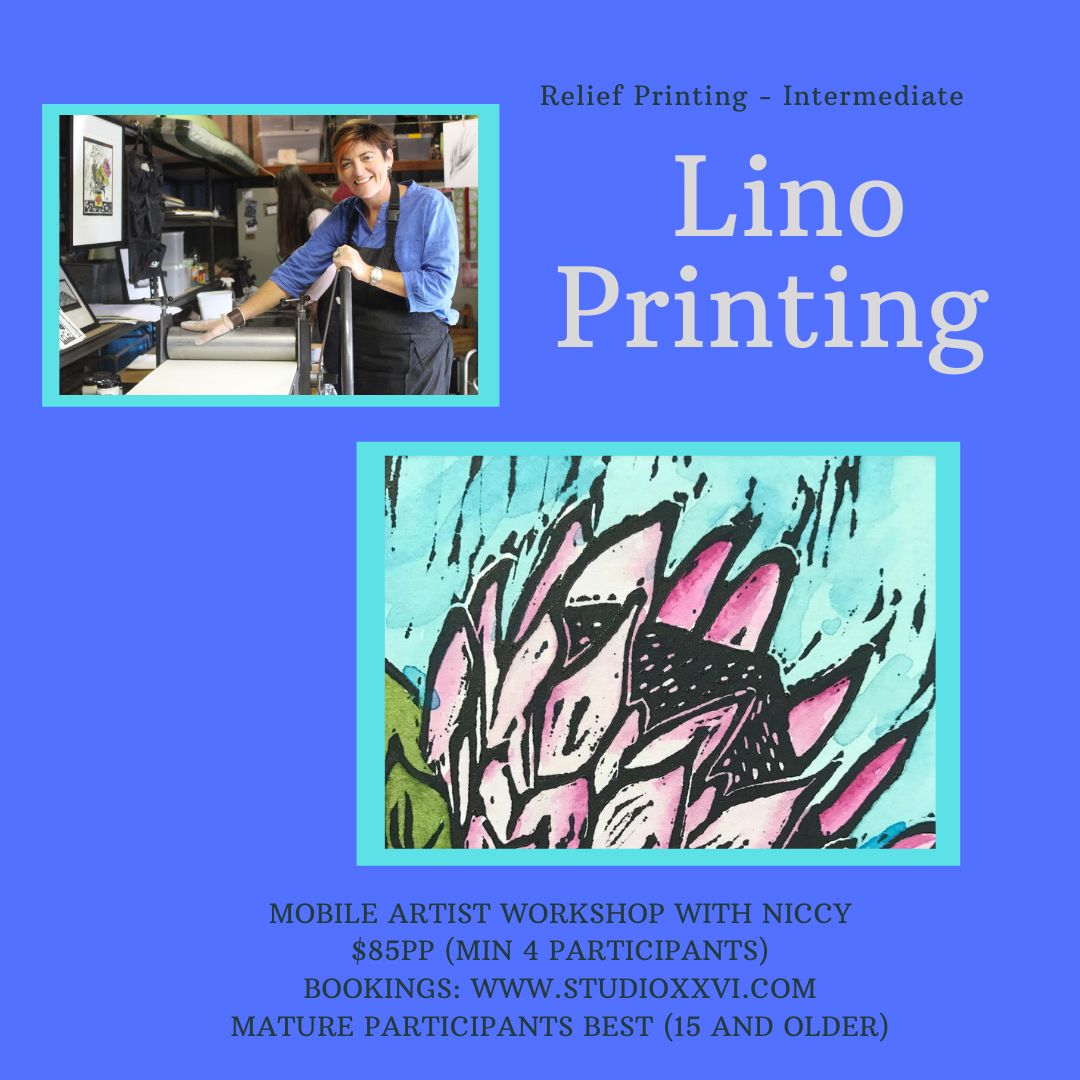
Lino Printing
Welcome to my truest love! I think the sculptural aspect of Lino is part of the joy. I see myself as an Artisan and Craftswoman so carving a Lino fills my cup. I’m also a daily drawer and drawings translate beautifully to relief printing.
Sumi-e
Ink wash painting (simplified Chinese: 水墨画; traditional Chinese: 水墨畫; pinyin: shuǐmòhuà; Japanese: 水墨画, romanized: suiboku-ga; Korean: 수묵화, romanized: sumukhwa), or sumi-e (Japanese: 墨絵), is a type of East Asian brush painting that uses black ink – as used in East Asian calligraphy – in different concentrations. Emerging in Tang dynasty China (618–907), it, and associated stylistic features, overturned earlier, more realistic techniques. These associated features include a preference for shades of black over variations in colour, and an emphasis on brushwork and the perceived “spirit” or “essence” of a subject over direct imitation. It flourished in the Song dynasty China (960–1279), as well as in Japan after it was introduced by Zen Buddhist monks in the 14th century.
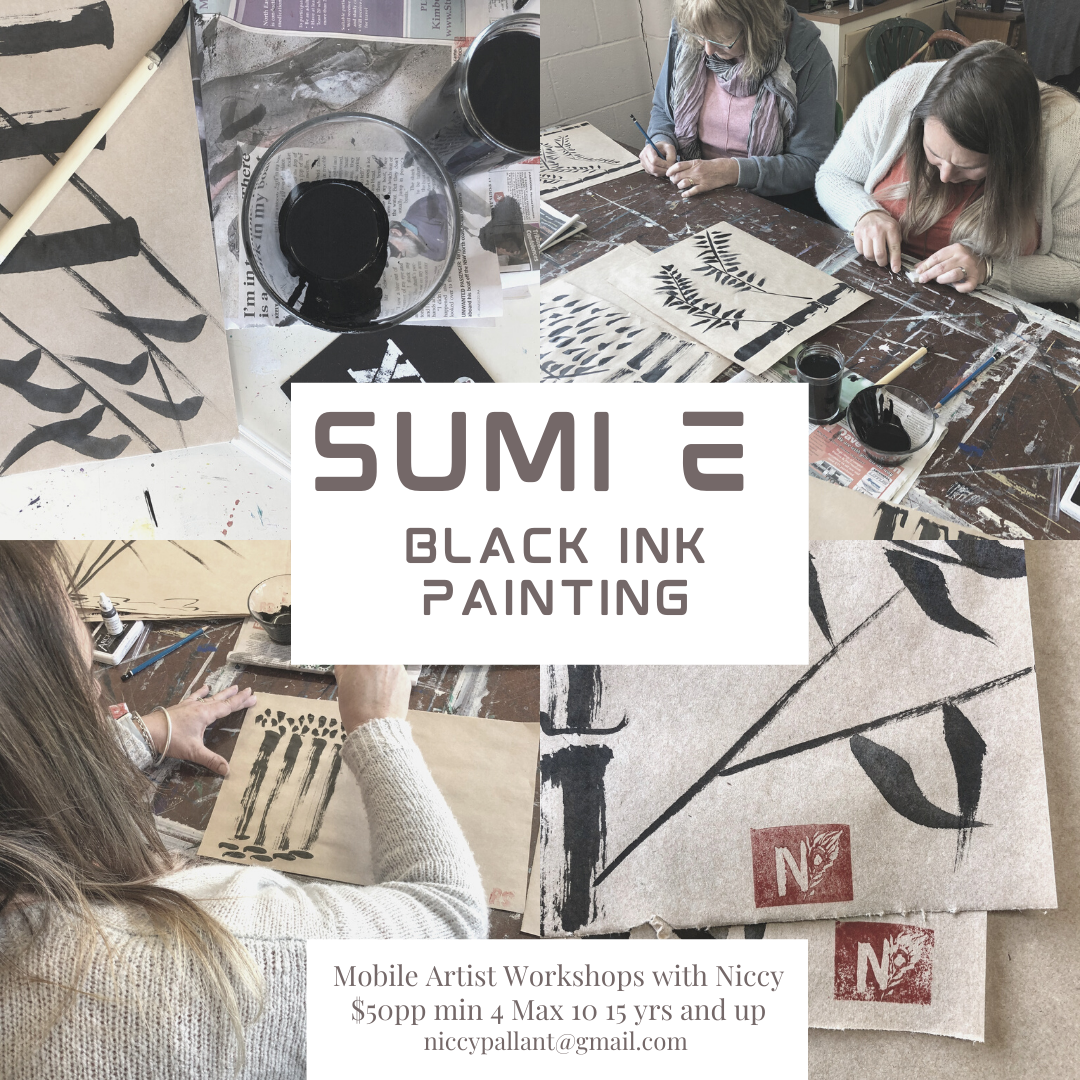
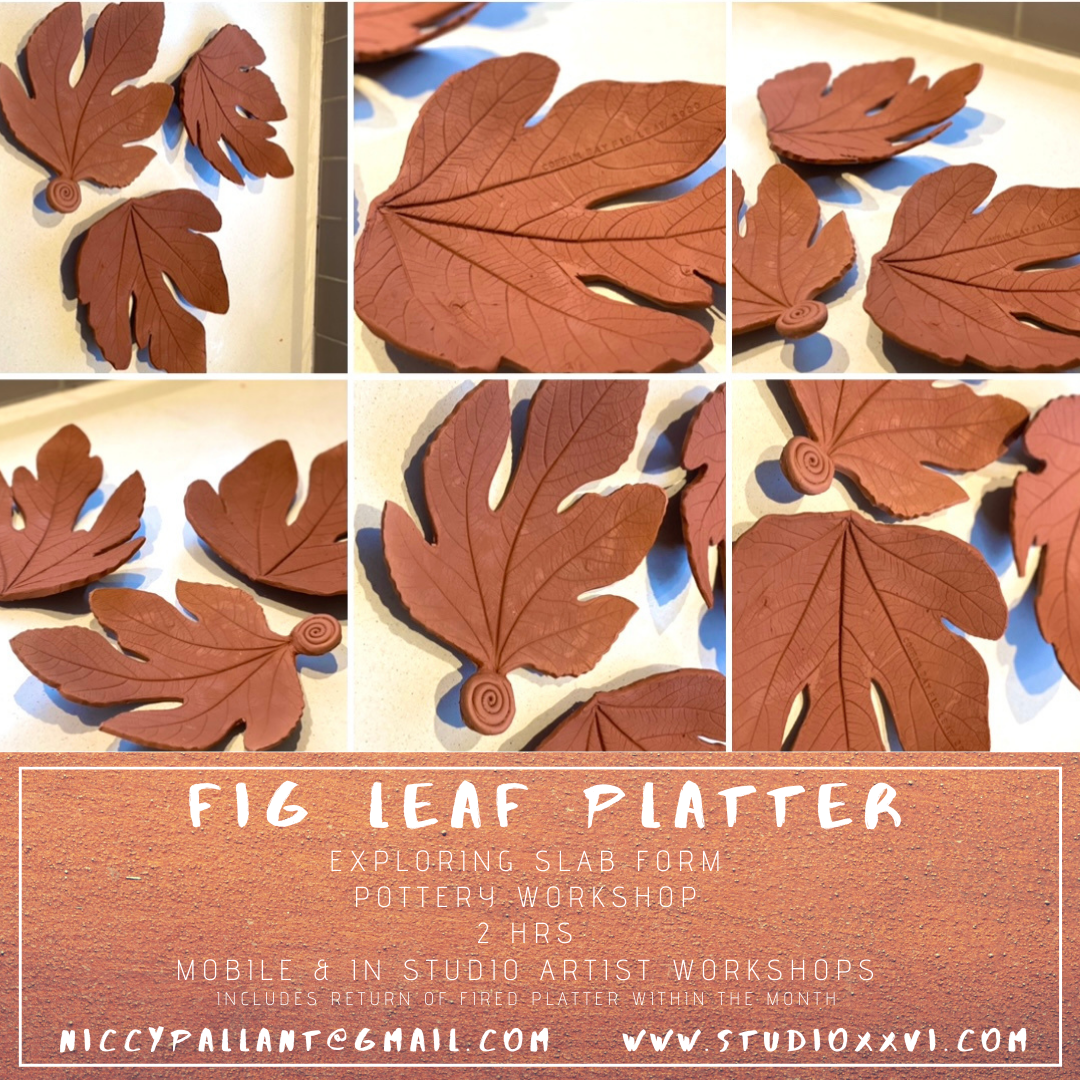
You will use a fig leaf from my garden to create a ceramic platter. You will be able to collect it fired one month later.
Exploring slab form in ceramics.
See product details.
